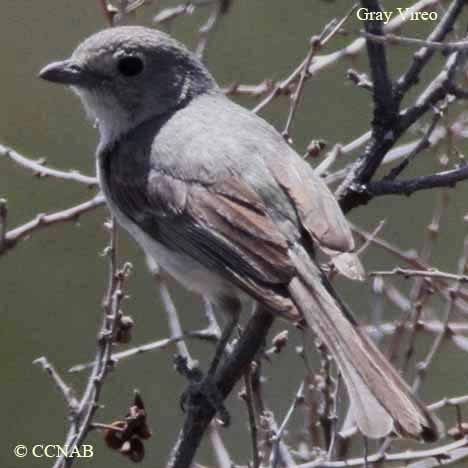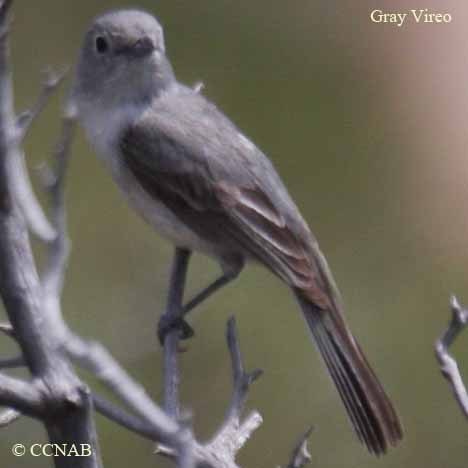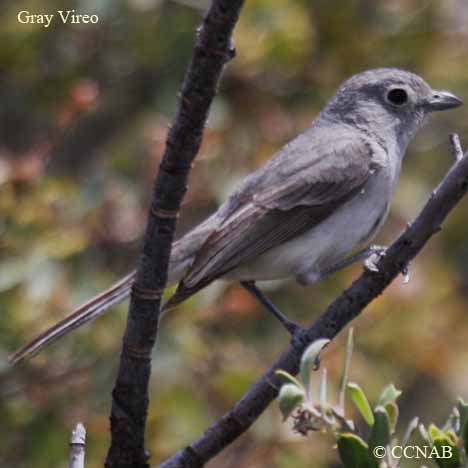North American Bird Search Box
This search box can be used to find bird species using bird's english, french or latin name, or to identify bird by its 4 letter Alpha Code
Field Guide for all the Birds of North America
Gray Vireo
4 Letter (english names) Alpha Code: GRVI (2)
Viréo gris
Vireo vicinior
Information, images and range maps on over 1,000 birds of North America, including sub-species, vagrants, introduced birds and possibilities
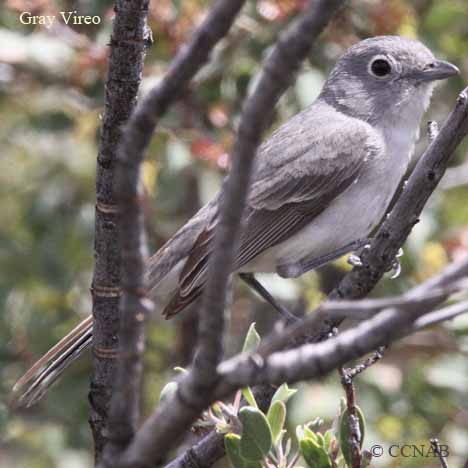
Species: The Gray Vireo (Vireo icinior) is found in a semi-arid landscape, composed of oaks, juniper and scrub brush. It is not an easy bird to observe as it stays out of sight in the overgrowth. However, it can be located by its singing. This dull gray bird has few features that one can use as identifying notes. It mainly feeds on insects and some fruit in the winter months.
Distinctions: The male and female are very similar in appearance. It has a large bill with a slight hook at the end of upper mandible, same identifying features seen in other vireos. Dull grey crown, darker grey body, wings and tail. Two wing bars, one more apparent than the other. Light grey lores, with a weak eyering as well as a greyish-white throat and breast.
Voice: Nasal sounding, similar sounds to other vireo types, multiple call notes. Sings from inside of undergrowth, more likely to be heard than seen, sings throughout the day even after the breeding season.
Nesting: Three to five white eggs, speckled with brown or black spots, two broods per year. Suspended from a fork in branches of a tree. The nest is composed of strips of wood bark, plant fibres and lined with fine grasses and spiderwebs.
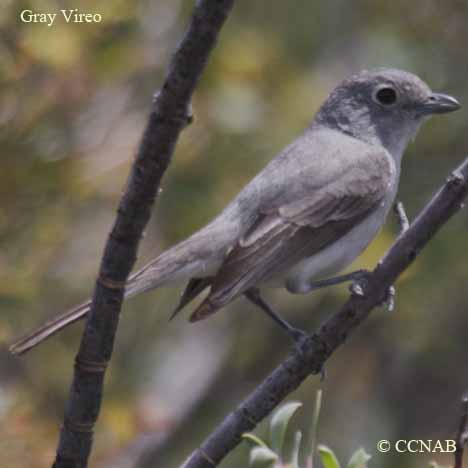
Life, Habitat & Pictures of North American Vireos
| B L | W W | W | Family | Latin Name |
|---|---|---|---|---|
| 5.5" 14cm | 8" 20.3cm | 0.5 oz 14.2g | Vireonidae | Vireo vicinior |
North American Bird Calls
- Click here
- Summer
- Year Around
- Winter
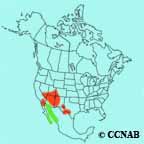
Distribution: The Gray Vireo is observed in the southwestern US states, from Colorado to California, eastward through Arizona, New Mexico and into Texas. This tough vireo is accustomed to the hot and dry climate of its habitat. It winters in southern Colorado and west Mexico.
Reference to Other Bird Site:
ABA - American Birding Association This site represents an organization that maintains official records of all birds species that have been proven to have been seen inside the perimeters of the North American Continent and the surrounding bodies of water. Regular revised versions are posted to keep the bird list current at all times. This is the list used by all serious birders over their lifetime. You may be aware of the movie called the "Big Year". It was with this list that all the competing birders used in an attempt to set a new record as to how many bird species that could be seen by an individual birder in one calendar year.
